Pukka’s Promise to Live Longer
Air Date: Week of February 22, 2013
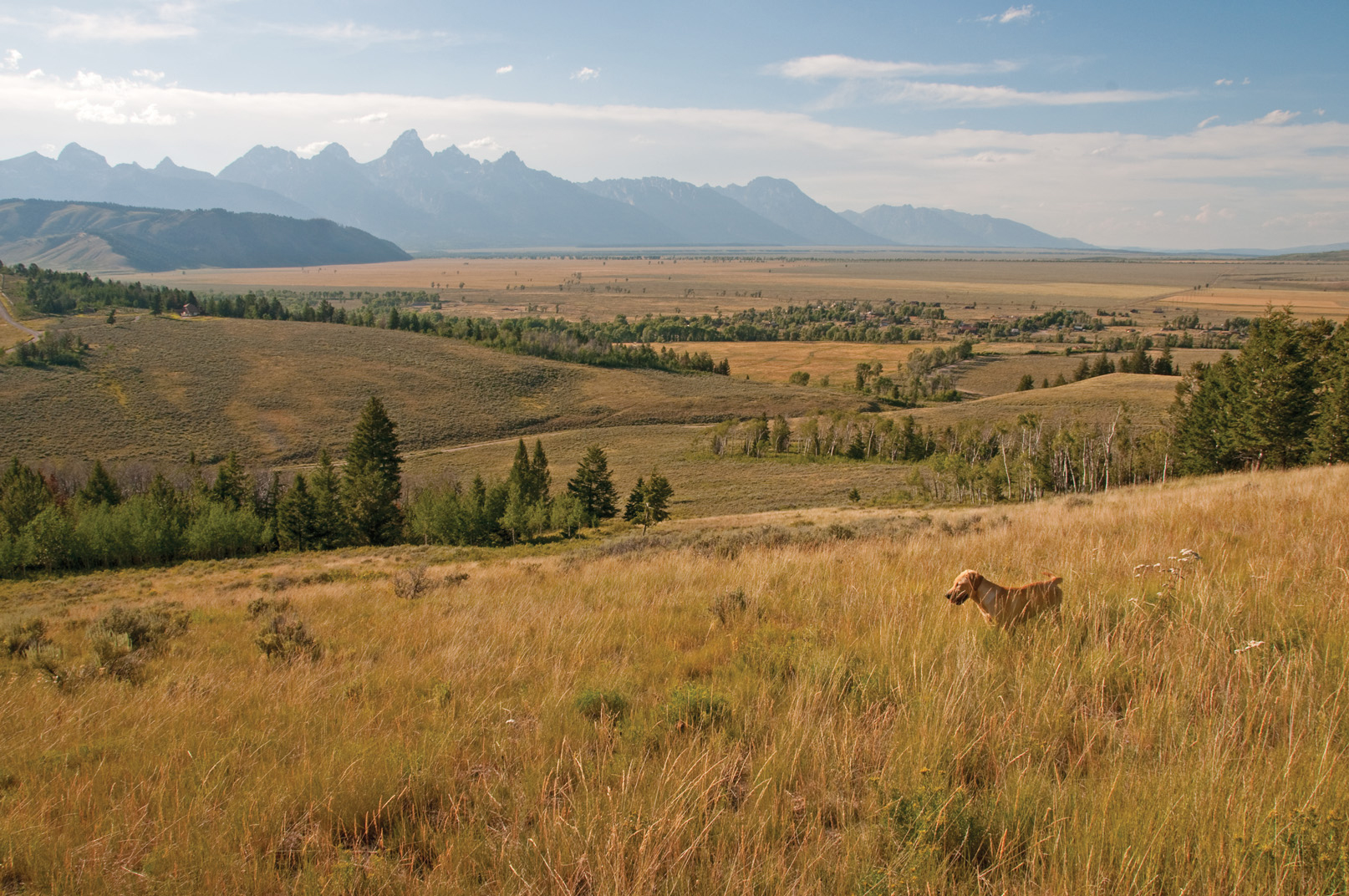
Pukka in the Grand Tetons of Wyoming. (Photo: Ted Kerasote)
Dogs have far shorter lives than many animals, including the humans that love them. From food to vaccines Ted Kerasote’s new book, Pukka’s Promise, examines how to help our dogs live longer. Ted Kerasote talks with host Steve Curwood.
Transcript
CURWOOD: Dogs have shared our lives and our homes for thousands of years. They are our best friends, and we give them our hearts knowing that we'll most likely outlive them. Some very small breeds can live up to 20 years, but most dogs only make it half that far. Bestselling author Ted Kerasote, mourning the death of his beloved dog Merle, decided to find out how to help dogs live longer. The result is his new book Pukka's Promise, named for his new dog Pukka, but the inspiration came while he was on the road promoting his previous book about Merle.
KERASOTE: It was in Monroe, Louisiana, there in the deep south...I was checking my e-mail before doing my evening presentation and once again was struck by this common refrain that I had been seeing in hundreds of emails. “Why did my dog die at two-years-old, three, four? Why did four out of five of my golden retrievers die of cancer?” I sat back and thought, “why do our dogs die so young? Merle himself, why did he die at 14 when some of my horses are still going strong today at 25?” So I started doing some research and discovered that dogs are a short-lived species relative to some other animals because they’re direct descendants of wolves - sharing 99.9% of their DNA. And wolves themselves are a short-lived species. So our dogs have inherited this fateful genetic legacy. But how we raise and breed them can further shorten their naturally brief lives.
CURWOOD: You found Merle wandering in the desert. He was a stray, but for your new puppy, Pukka,you went to a breeder. Why a breeder?
KERASOTE: After Merle died, I didn't want another dog right away. I needed to let my heart heal. I wanted to write his biography without another dog deluding my memories of him. So I spent three years doing that, then I started looking for another dog. I went to shelters first, but I simply didn't find a dog in a shelter with whom I fell in love the way I had fallen in love with Merle almost on the spot. And I wanted some certain qualities in a dog: I wanted him to be able to be out in cold weather, to ski, to swim rivers, to mountain bike with me.
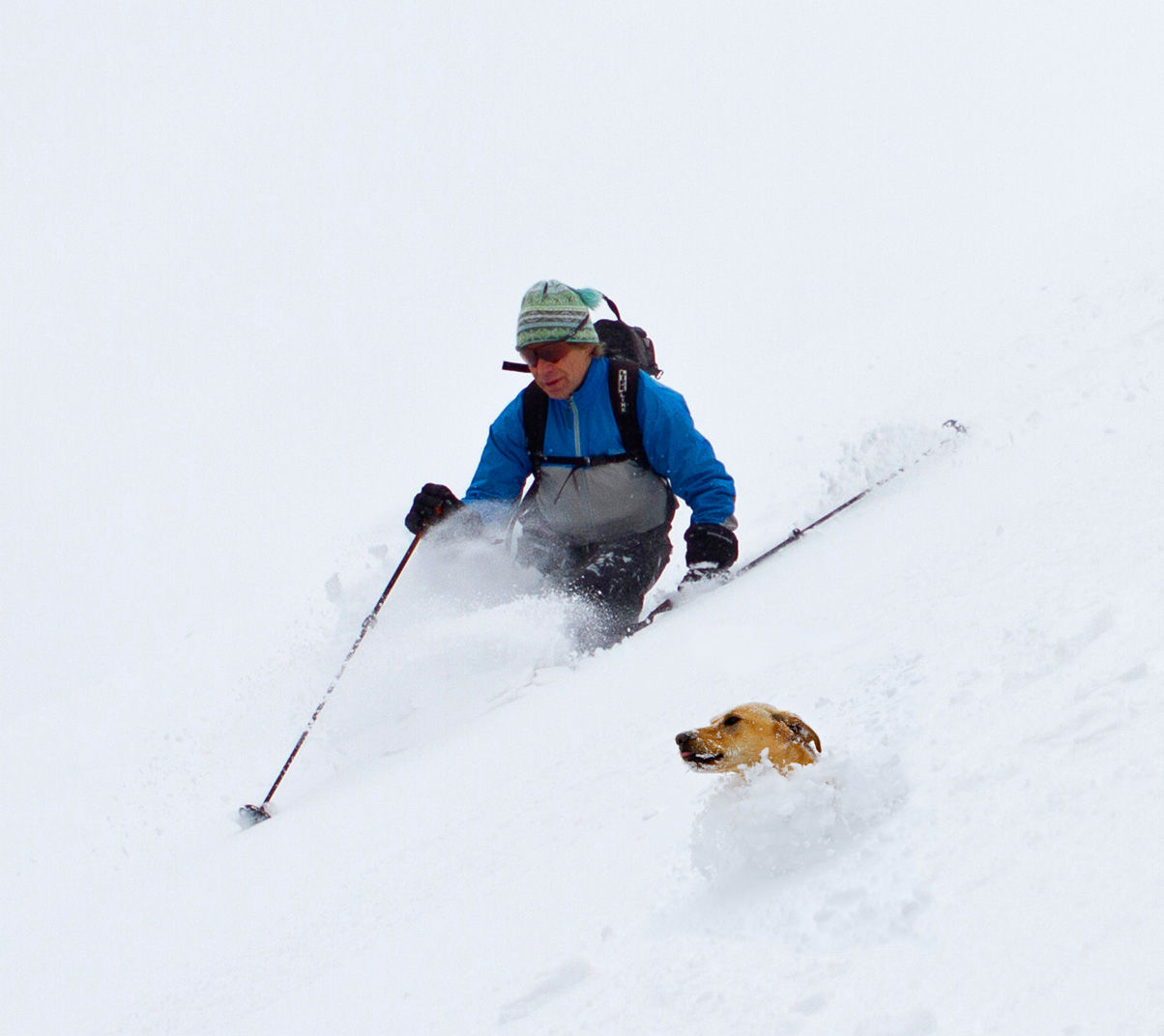
Ted and Pukka skiing. (Photo: Ted Kerasote)
CURWOOD: Now wait a second, a dog skis...
KERASOTE: I'm using that term poetically. Running behind one as one skis downhill, the dogs either porpoise through the snow if it’s shallow enough or swim through it if it’s steep and light enough.
CURWOOD: [LAUGHS] OK.
KERASOTE: So I wanted a dog with similar qualities to Merle, and finally decided that maybe I could find such dog by going to a breeder, and that it would also be instructive for researching and writing the book...to describe to people how they could hedge their bets about getting a healthier longer lived dog like going to a reputable breeder that had done all the appropriate orthopedic health screenings and DNA tests for that breed.
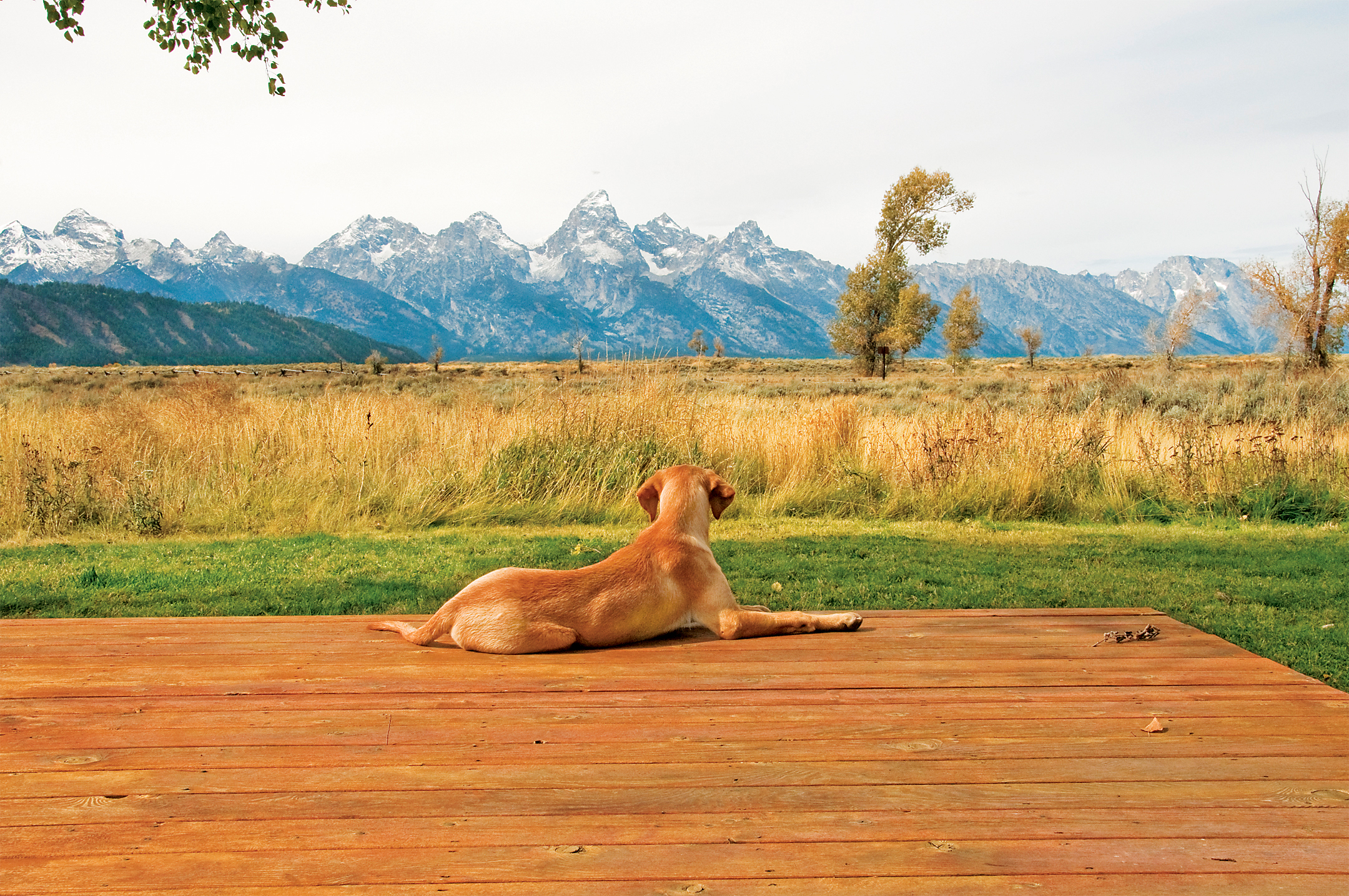
Pukka relaxing (Photo: Ted Kerasote)
CURWOOD: One advantage of going to a breeder to get a dog is that the dog won't be spayed or neutered. And almost inevitably from a shelter dogs have been sterilized.
KERASOTE: Correct. Correct.
CURWOOD: So why did you want a dog that would be able to reproduce?
KERASOTE: I had been reading the veterinary literature, and there’s been emerging evidence over the last decade that spayed and neutered dogs are not as healthy or longer lived as intact ones. Spayed and neutered dogs have a greater chance of having an adverse reaction to vaccines, in general they are more obese. They have more endocrine dysfunction. Pretty serious stuff. And Intact dogs tend not to have those conditions as often, and they tend to live little bit longer. In addition, we now have procedures that can forestall a dog’s having puppies, but that keep a dog’s beneficial sex hormones there - tubal ligation, hysterectomy or vasectomy - the same procedures used in human medicine. However, they don't touch a dog’s testes or ovaries so that a dog retains its beneficial sex hormones, estrogen and testosterone, which have been shown to forestall or prevent many of those nasty conditions I just mentioned.
CURWOOD: Now, there's another controversial topic you take up in your book, and that's whether not to vaccinate dogs, or perhaps I should say vaccinate dogs as much as they are vaccinated. You did a lot of research on this topic. Tell us what you found.
KERASOTE: Vaccines, for all the good they do, are not benign. They can cause adverse reactions, everything from welts to arthritis to fatal hemolytic anemia. And it has been found now that the duration of immunity for the core canine vaccines, parvovirus distemper, adenovirus 2...and rabies is far longer than any of us have imagined. It actually seven to 15 years, yet some veterinarians continue to recommend annual vaccinations for our dogs, overloading their immune systems. However, some vets say instead of vaccinating your dog, have your vet give it a blood test called a Titer. The Titer measures the antibodies that the dog has developed to these diseases. If the dog has immunity, no need to re-vaccinate it at three years. If it's lost its immunity, give it a booster shot.
CURWOOD: How common is it to test for the Titer for antibodies?
KERASOTE: Now that has become pretty common, unlike tubal ligations and vasectomies. There are labs around the country that your vet can send a blood sample to, and a couple weeks later you get the results back.
CURWOOD: So in the modern world we live in, there are a lot of chemicals, and dogs perhaps are exposed more to these chemicals than we people are. Can you talk about that?
KERASOTE: You bet. Dogs are smaller than adult humans, and just like small children they receive a greater dosage of the environmental toxins around us per unit of body weight than do we. Dogs also are on the ground. They live on ground. They take in the world through their noses so they're breathing in chemicals that we don't breathe in. They also walk around bare-pawed on city streets, and on lawns that have been sprayed with herbicides. And when they get home at night, they don’t take a shower, as do we. They lick their paws, they lick their fur, further ingesting these chemicals.
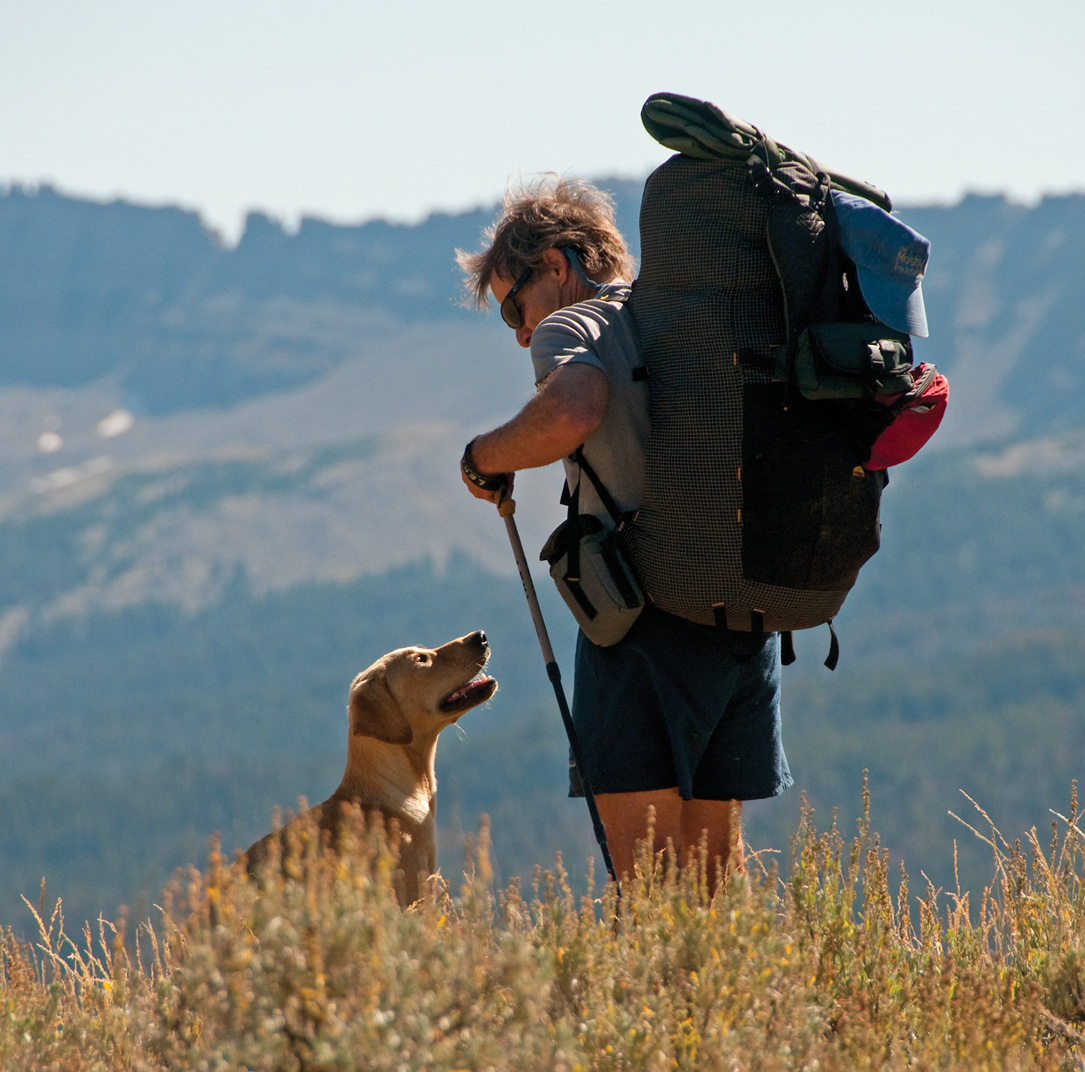
Ted and Pukka out on a hike. (Photo: Ted Kerasote)
CURWOOD: Let me talk to you about breeding dogs. You say that dogs are inbred overly in this country, and that that's part of the mortality problem, or the disease problem for dogs. Can you explain?
KERASOTE: Yes fewer and fewer sires are being used. One of the best examples is the golden retriever. Back in the 1970s, three famous sires contributed enormously to the gene pool, so today they have about two to 300,000 descendants. What happens when you have those many descendants then breeding is you have the possibility, a much greater possibility, of recessive genes meeting. And recessive genes can cause anything from something nice like a coat color - the yellow lab, two recessive genes - but they can also cause blindness, muscle wasting disease, they can cause exercise-induced collapse and they can cause cancer. People think, experts feel, that one of the reasons that so many dogs are dying of cancer purebred dogs is that there were too many of these fatal recessive genes floating around and now meeting.
CURWOOD: I have to say that your book is a pretty personal one for me. We recently lost our family dog, Mr. Crumpett, a golden retriever to cancer...
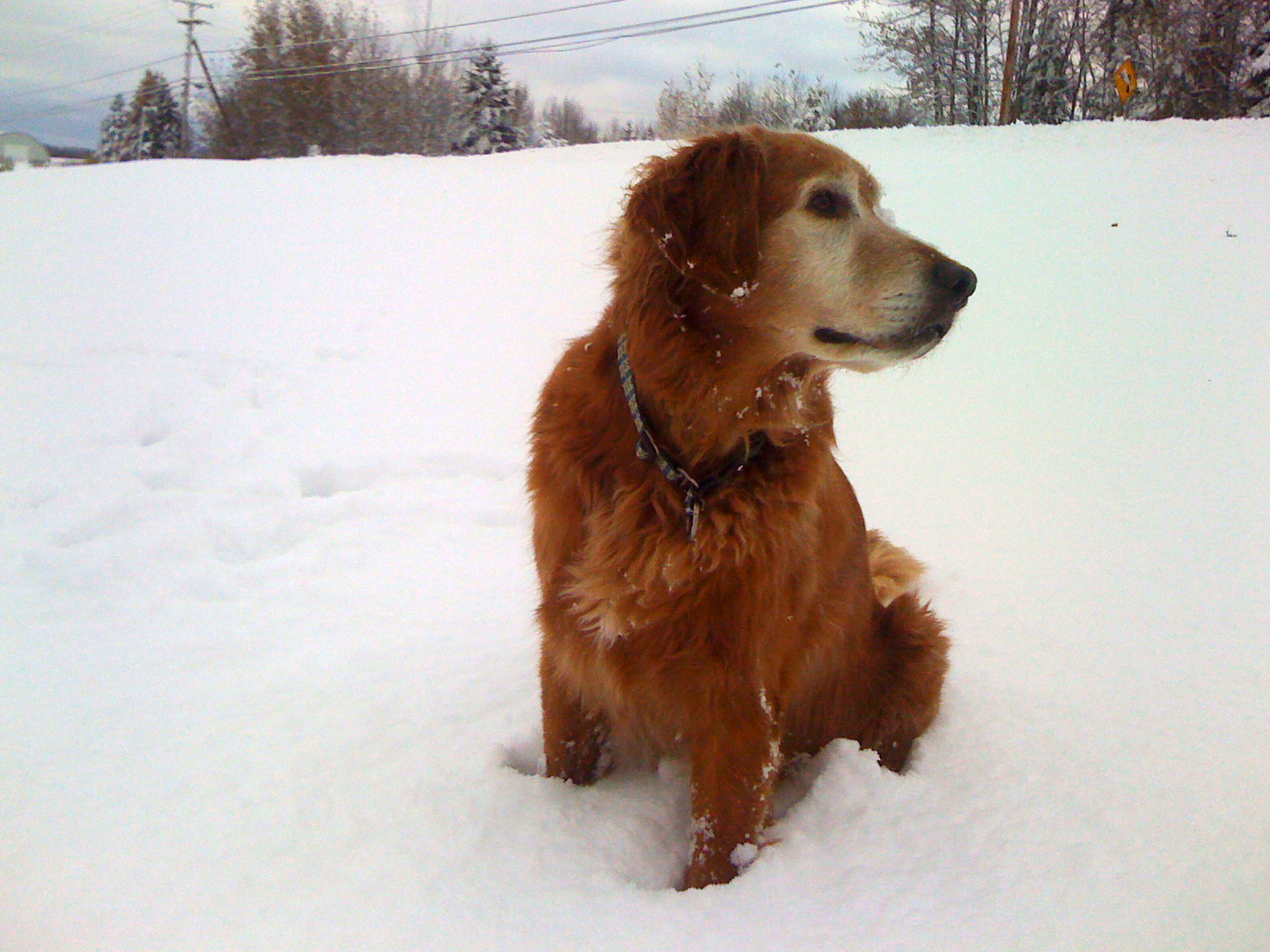
Golden Retriever, Mr. Crumpett (Photo: Steve Curwood)
KERASOTE: Oh dear.
CURWOOD: And a few years earlier lost Zoe, also a Golden Retriever to cancer.
KERASOTE: How old were they?
CURWOOD: About nine each. This inbreeding perhaps might have promoted the odds of cancer?
KERASOTE: Absolutely, because your dogs are more than likely related to those three popular sires whom I mentioned back in the 1970s.
CURWOOD: All this talk about inbreeding...I would think that that would make the case for getting a mixed breed dog. Those dogs that perhaps could be saved from a shelter, for example.
KERASOTE: Absolutely, and if we look at the veterinary literature it shows that mixed breed dogs live about 1.8 years longer than an equivalently weighted purebred dog. And they also have fewer genetically transmitted diseases.
CURWOOD: So given this cancer epidemic, what should people do?
KERASOTE: As soon as they see a bump, a little bump on their dog, they should not hesitate. They should go to their vet and say, “what is going on?” I visited four major oncology centers around the country. They saw far too many dogs six months after having been to a general practitioner veterinarian who said, “let's just watch this,” and they now had to amputate the dog’s leg or give it chemotherapy whereas six months before it would have been a small tiny incision.
One of the oncologists at CSU said to me, “What are the four most dangerous words in the English language? Let's...just...watch...it.”
CURWOOD: Let’s talk about dog food. In your book, I counted them up, you got four chapters just on food.
KERASOTE: We all love to eat.
CURWOOD: And so do dogs. And I would guess that most Americans feed their dogs bags of kibble or perhaps canned food, but you found that that is not the best way to go. Can you explain?
KERASOTE: Yes. Most of moderately priced kibble is made from corn. Well, there are lots of problems with corn. Corn is one of the most heavily sprayed agricultural crops in North America; it receives 30 percent of the pesticides put on our crops. These days, 85 percent of the corn crop is also genetically modified, which means that it's repeatedly sprayed with the herbicide Roundup. So one might say, you know, maybe we shouldn't feed our dogs high carb diets. On the other hand, vegetables green leafy vegetables, yellow-orange vegetables have been shown to be cancer protective whether you’re a dog or a human. And another group of interesting studies show that when dogs eat a high-protein diet, their performance improves. They have a higher VO2 max, more endurance, they’re aerobically fitter, and they have better thermoregulation.
CURWOOD: So you're not that suggesting people do what you do there in the Grand Tetons of Wyoming with your dog Pukka, and that is you get the rifle and you go out get yourself an elk.
KERASOTE: I do get an elk. Of all of the meats I tested in foods, the elk had the fewest amount of heavy metals, lives far from roads, far from industry, but I can’t feed Pukka on wild game. I couldn't shoot enough big animals for Pukka to eat, so Pukka eats a commercial frozen raw food diet; he eats kibbles that meet the criteria that I just suggested, and I rotate him through a variety of foods.
CURWOOD: What about beef?
KERASOTE: I don't feed Pukka beef.
CURWOOD: Why?
KERASOTE: Ecologically it's better to eat wild grazers or grass fed beef, nor do I think corn fed beef is as healthy as some of the other meats I feed it Pukka. It's shot up with antibiotics with hormones, it lives on a feedlot and eats corn - and we’ve talked about the problems that corn has.
CURWOOD: Ted Kerasote, if you had one piece of advice for a dog owner, what would that be?
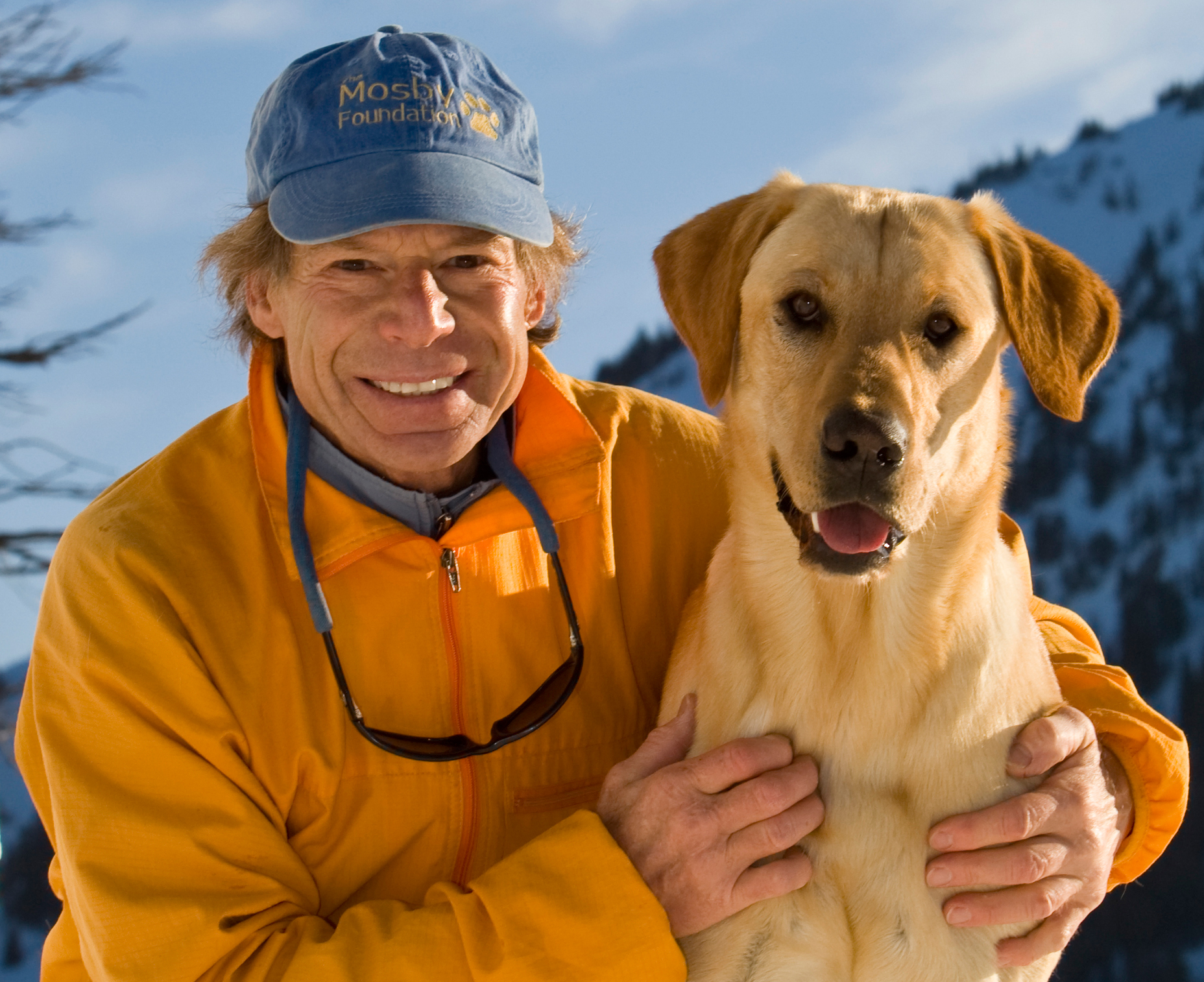
Ted Kerasote and Pukka. (Photo: Ted Kerasote)
KERASOTE: To have more of an ongoing conversation with your dog. Get down on the ground with your dog in your house. Try to understand what it's telling you more about what it wants, how often it wants to go out, where it wants to go instead of always deciding that you're going to take it someplace - let the dog decide to tell you where it's going to take you for the walk that day.
CURWOOD: Do the dogs keep us...or do we keep the dogs?
KERASOTE: I think it's mutual. We have this on going conversation with each other and if we're doing it really well we try to meet each other’s needs.
CURWOOD: Ted Kerasote's latest book is “Pukka's Promise, the Quest for Longer Lived Dogs”.
Links
Living on Earth wants to hear from you!
Living on Earth
62 Calef Highway, Suite 212
Lee, NH 03861
Telephone: 617-287-4121
E-mail: comments@loe.org
Newsletter [Click here]
Donate to Living on Earth!
Living on Earth is an independent media program and relies entirely on contributions from listeners and institutions supporting public service. Please donate now to preserve an independent environmental voice.
NewsletterLiving on Earth offers a weekly delivery of the show's rundown to your mailbox. Sign up for our newsletter today!
 Sailors For The Sea: Be the change you want to sea.
Sailors For The Sea: Be the change you want to sea.
 The Grantham Foundation for the Protection of the Environment: Committed to protecting and improving the health of the global environment.
The Grantham Foundation for the Protection of the Environment: Committed to protecting and improving the health of the global environment.
 Contribute to Living on Earth and receive, as our gift to you, an archival print of one of Mark Seth Lender's extraordinary wildlife photographs. Follow the link to see Mark's current collection of photographs.
Contribute to Living on Earth and receive, as our gift to you, an archival print of one of Mark Seth Lender's extraordinary wildlife photographs. Follow the link to see Mark's current collection of photographs.
 Buy a signed copy of Mark Seth Lender's book Smeagull the Seagull & support Living on Earth
Buy a signed copy of Mark Seth Lender's book Smeagull the Seagull & support Living on Earth

